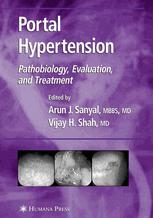

Most ebook files are in PDF format, so you can easily read them using various software such as Foxit Reader or directly on the Google Chrome browser.
Some ebook files are released by publishers in other formats such as .awz, .mobi, .epub, .fb2, etc. You may need to install specific software to read these formats on mobile/PC, such as Calibre.
Please read the tutorial at this link: https://ebookbell.com/faq
We offer FREE conversion to the popular formats you request; however, this may take some time. Therefore, right after payment, please email us, and we will try to provide the service as quickly as possible.
For some exceptional file formats or broken links (if any), please refrain from opening any disputes. Instead, email us first, and we will try to assist within a maximum of 6 hours.
EbookBell Team

4.0
56 reviewsAlthough the past several years have seen tremendous progress in both the understanding and clinical management of portal hypertension-a major complication of cirrhosis-many new therapies and pathogenic principles are now emerging that will lead to vastly improved therapeutic approaches in the years to come. In Portal Hypertension: Pathobiology, Evaluation, and Treatment, internationally renowned investigators and clinicians discuss the latest findings on key scientific topics and review the evaluation and management of portal hypertension in the clinic. Writing in an easy-to-read style, the authors review its pathobiology, the progress being made in its experimental understanding, the methodologies to assess it in humans, the treatment of its complications (esophageal varices, ascites, and hepatorenal syndrome), and its treatment in special circumstances (during pregnancy, in children, or when the portal vein is blocked). They also provide in-depth coverage of the pros and cons of the various therapeutic choices available to the clinician managing patients with complicated portal hypertension.
State-of-the-art and readily accessible, Portal Hypertension: Pathobiology, Evaluation, and Treatment provides both an authoritative reference for all gastroenterologists and an indispensable resource for all physicians treating liver disease, particularly in a tertiary care setting.